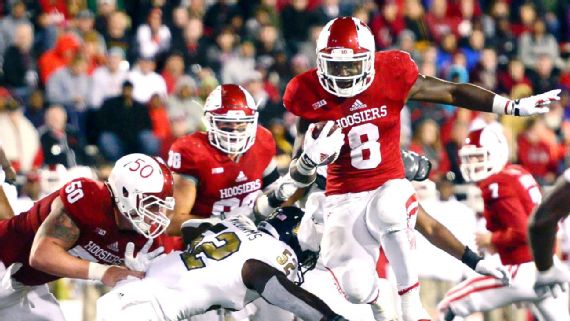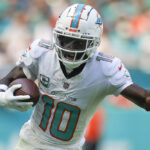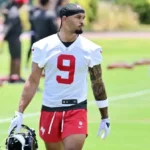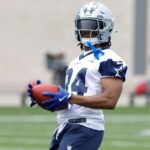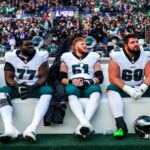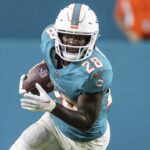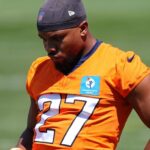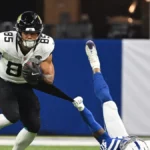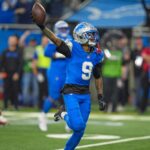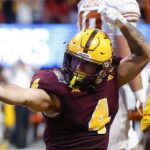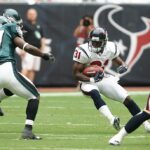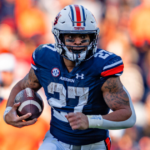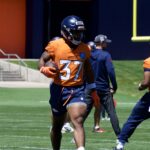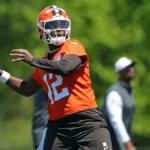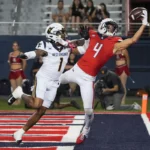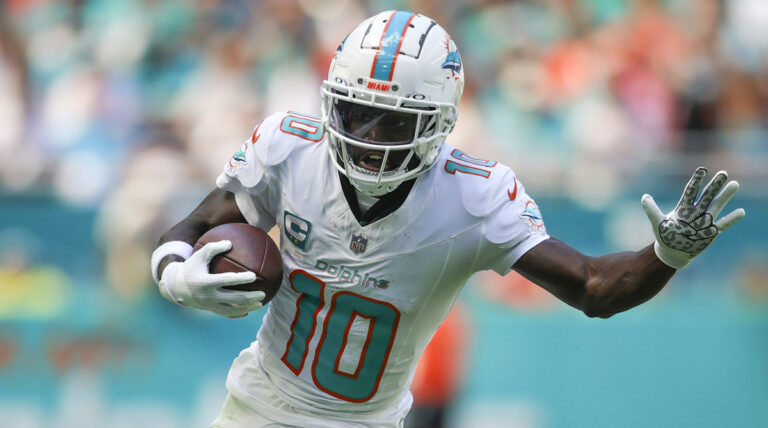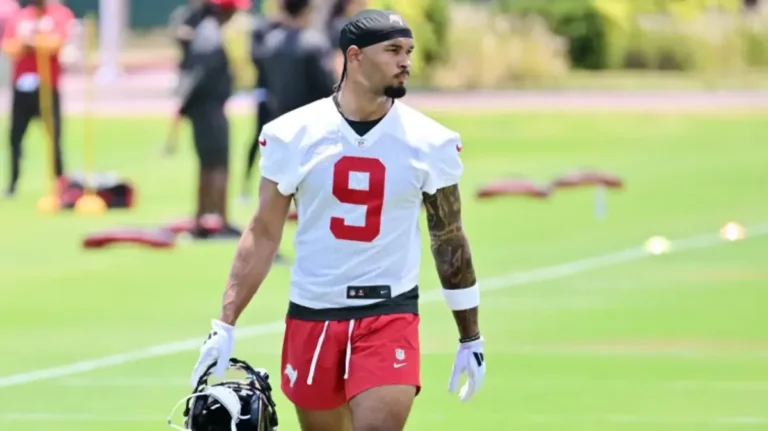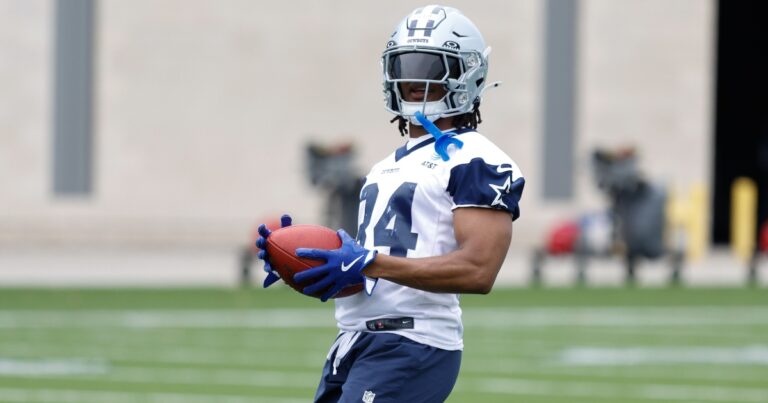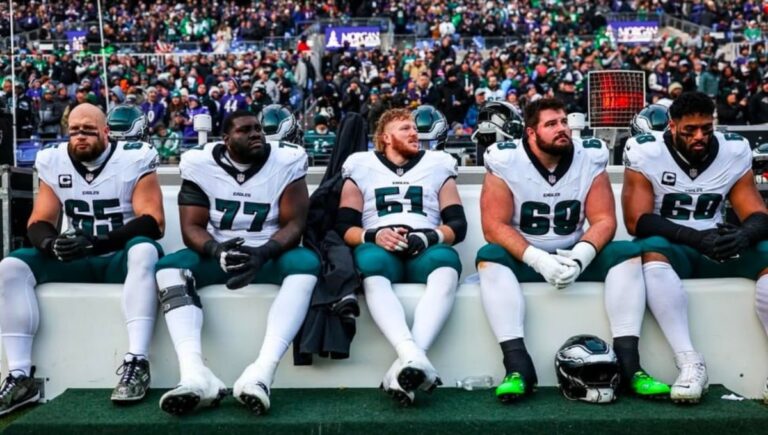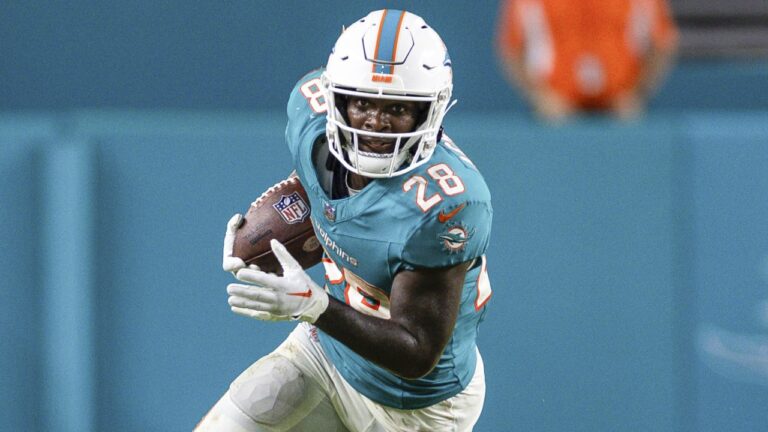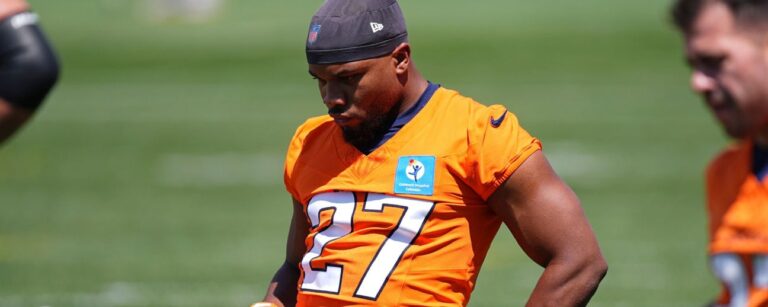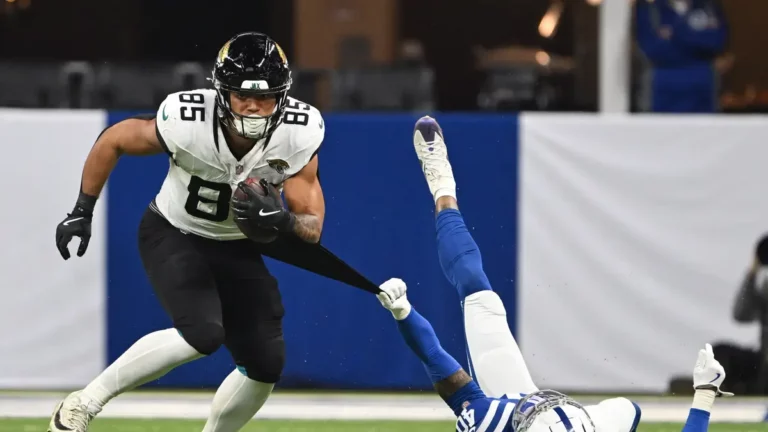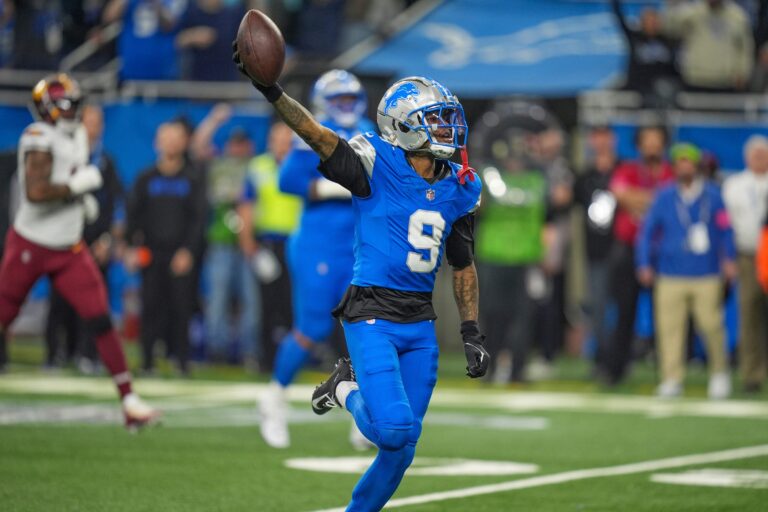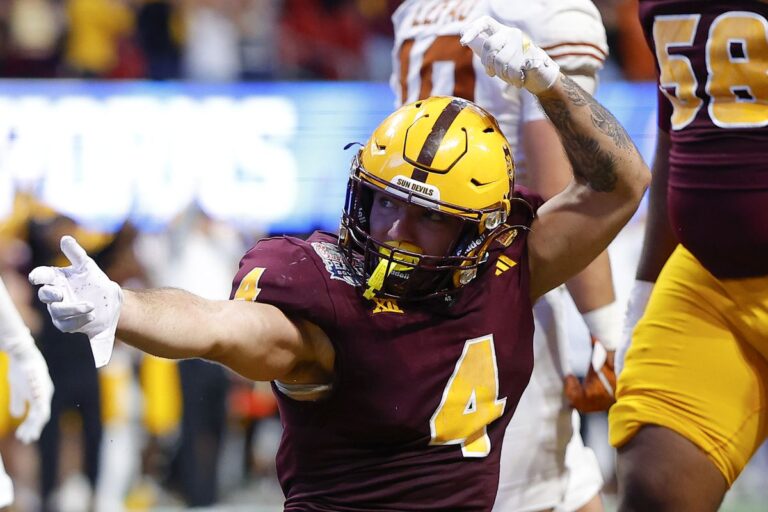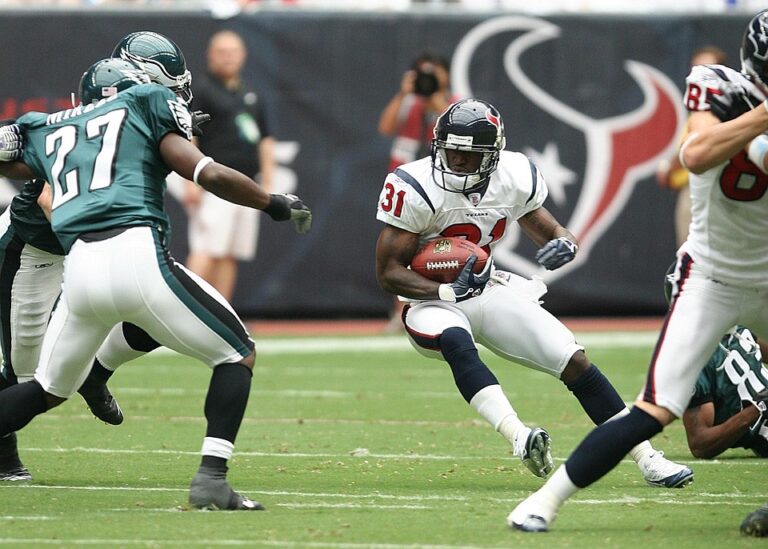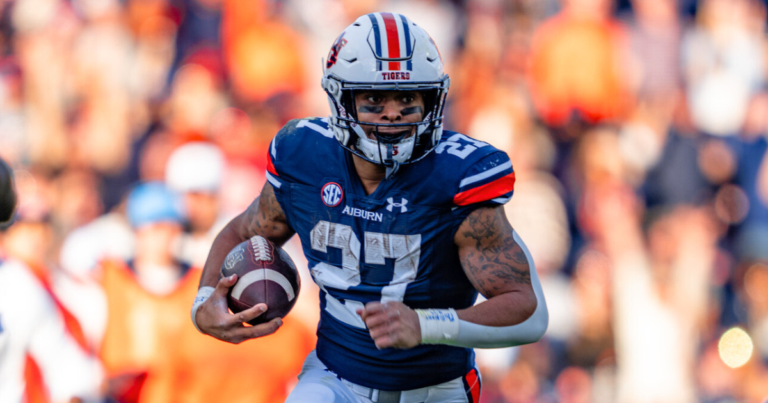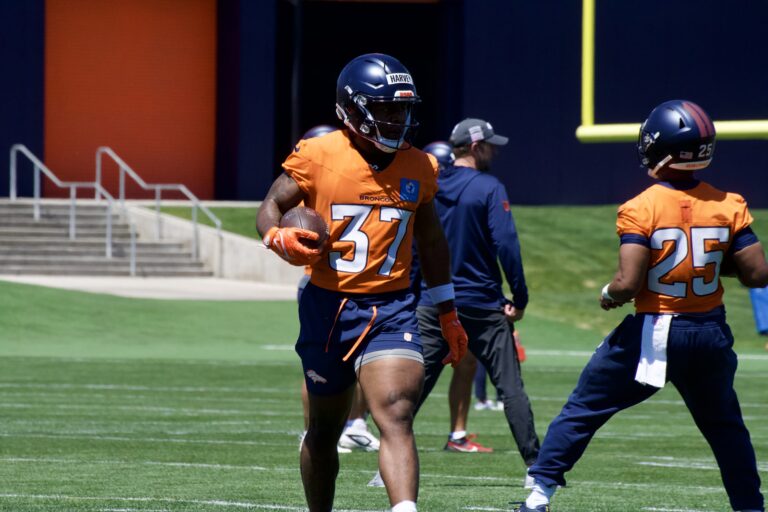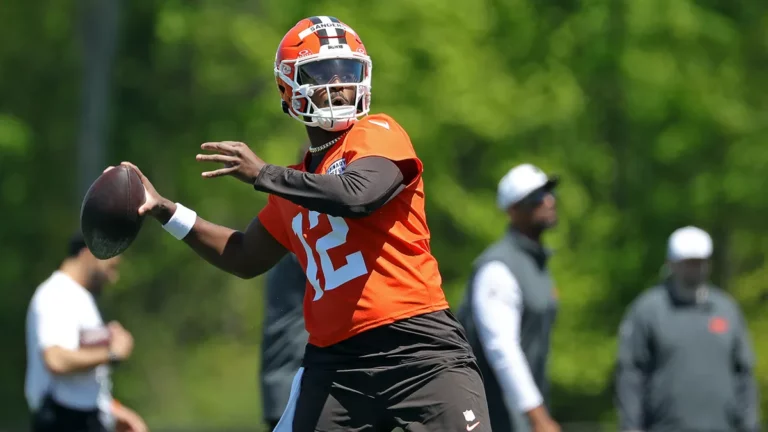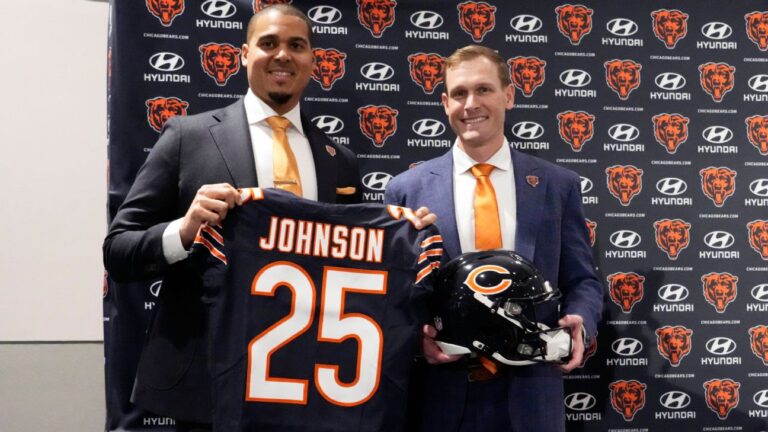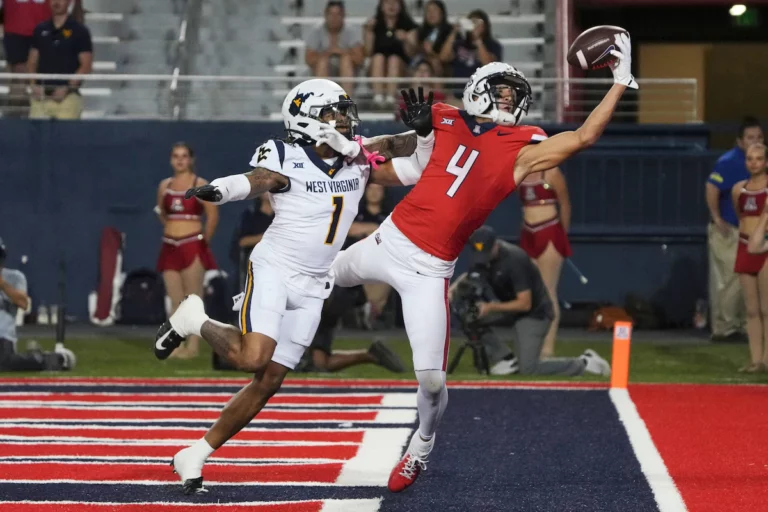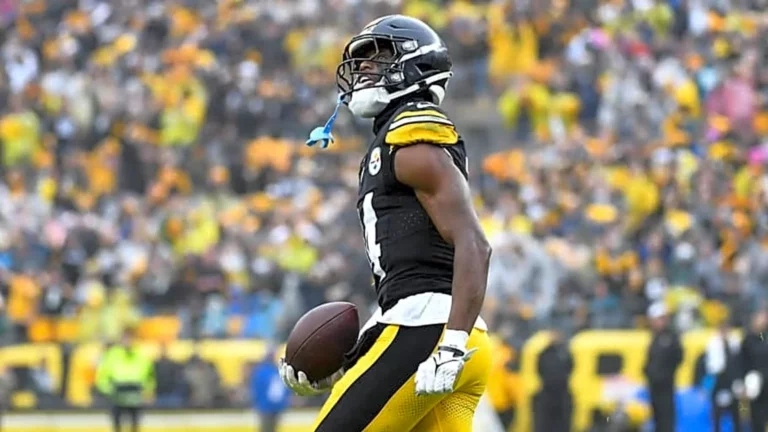Top Running Back Prospects for Fantasy Football

5) Jordan Howard, Indiana
This Hoosier running back is a big, hard-nosed runner and the second highly regarded NFL prospect out of Indiana in two years, after Tevin Coleman in 2015. The 6-foot, 230 lb Howard runs under his pads, consistently breaking first contact and pushing the pile forward. I knocked Jordan’s former teammate Tevin Coleman further down on my board than most, due to his inability to break tackles and his upright running style. Howard showed himself to be much better at breaking tackles, even though he lacks the breakaway speed that Coleman possesses.
I am higher on Howard than most because I see a running back that has the game to adapt quickly to the physical style of running required in the pros. When a running back transitions to the NFL, he must be able to break tackles because he will not be able to beat defenders his speed. Based on talent alone, Howard is a second round pick, but injuries in college will likely knock him down on most draft boards.
Before Indiana, Howard started his college career at UAB until they dropped their football program. He transferred to Indiana and luckily, he was eligible to play right away. After waiting behind Coleman, Howard exploded in 2015, averaging 181 yards per game in the six games he received at least 20 carries. He put up a personal best 238 rushing yards against Michigan’s top-five nationally ranked defense.
Similar to Devontae Booker, there are some concerns among scouts about Howard’s breakaway speed (unofficial 4.59 second 40 yard dash time from Indiana’s Pro Day). Also, the scouting community thinks Howard needs to become better in pass protection, which would get him on the field earlier.
Jordan Howard’s physicality and one-cut running style is comparable to Frank Gore.
Talent: 8
Risk Level: 4
Overall (so far): 12

6) Alex Collins, Arkansas
The next running back on our list, Alex Collins, comes from another power running SEC school with an outstanding offensive line. Similar to Alabama with Derrick Henry, the Arkansas line regularly created space for Collins to get rolling downhill before making first contact.
When Collins’ partner in crime in the backfield, Jonathan Williams, went down with a knee injury prior to the season, it was up to Collins to carry the load. And carry the load he did; finishing his first season as a full-time running back with 1,577 yards rushing and 20 touchdowns.
Alex has the size, 5-foot-10, 217 lbs, and the power to break tackles in the NFL. He also possesses quick feet and solid wiggle for a back of his size. Scouts in the NFL are concerned about Collins’s capability to play with a line that does not constantly create lanes for the runner. Similar to Henry, Collins is most effective when he has a few steps to get his large body rolling. Also, Collins does not have the breakaway speed (4.59 second 40- yard dash) to bust long runs at the professional level.
In high school, Alex Collins was one of the most highly recruited running backs in the country, coming out of Fort Lauderdale, Florida. The Razorback starred early in the SEC as a freshman, recording 100 yards in his first three games, while splitting carries with Jonathan Williams. Collins and Williams continued to share the backfield in 2014, forming one of the best running back duos in the country.
Going forward, Collins must work on protecting the football, with seventeen career fumbles (nine of which were lost). Collins did not contribute much as a pass catcher in the Arkansas offense and must improve as a pass catcher, because right now he can only fill a two-down role in the NFL.
Alex Collins can provide the NFL with a downhill running style and the ability to break tackles with a big frame, similar to Chris Ivory.
Talent: 7
Risk Level: 4
Overall (so far): 11

7) Paul Perkins, UCLA
Heralded as the top quarterback recruit in the country out of high school, Josh Rosen arrived at UCLA and instantly made an impact on the football field. One thing he must have known when he committed to UCLA is that he could lean on one of the best running backs in the Pac-12, if things got difficult on the field.
Paul Perkins combines his superior vision with good wiggle to create yards after contact and bust long runs. Paul has NFL bloodlines through his father, Bruce, who played in the NFL for two seasons and his uncle, Don, who played eight seasons for the Dallas Cowboys. The Chandler, Arizona product was only a two-star recruit and chose UCLA over offers from Northwestern and Air Force. After redshirting his freshman year and starting half the games his second year, Perkins really came into his own in 2014 and 2015, rushing for 1,575 and 1,343 yards respectively.
I am worried about his transition to the NFL because of his slight lower body. At the professional level, Perkins might not be able to get the job done in short yardage and goal line situations. Paul is not a burner, putting up a 40-yard dash time of 4.54 seconds and will struggle to generate long runs in the NFL. Another concern is his lack of stature in pass protection and his limited exposure in the receiving department. Perkins was limited to screens, swings and wheel routes at UCLA.
Paul Perkins was a force in college football and consistently produced, reminding me of former Alabama running back TJ Yeldon, currently of the Jaguars.
Talent: 8
Risk Level: 3
Overall (so far): 11

